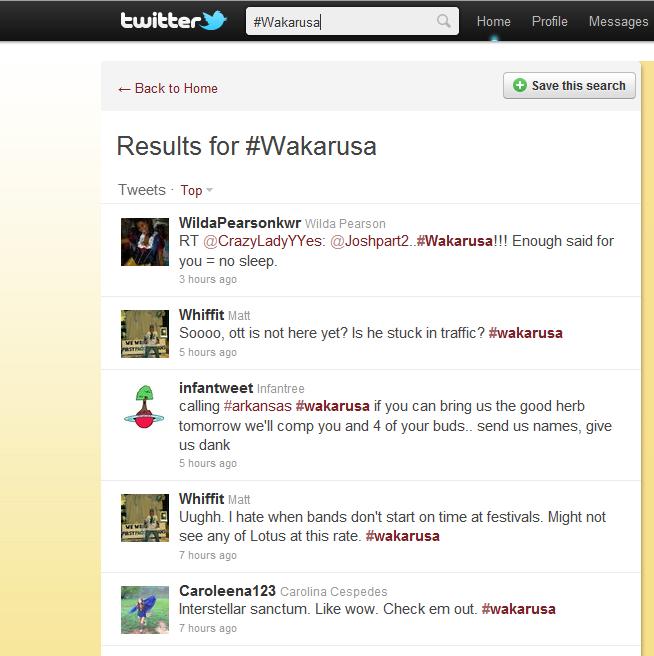Your cart is currently empty!

Using Hashtags Well
A hashtag is the number or pound sign “#” which you often see in Twitter messages.
So, for example, right now Wakarusa is going on. If you’re at Wakarusa, thinking about Wakarusa or for any other reason want to join the conversation about Wakarusa, you can tweet your thoughts with the letters “#Wakarusa” included, and your tweet will become part of the Wakarusa conversation.
People will be able to click on your “#Wakarusa” and see the larger conversation, including all the things being said by people whom they don’t follow.
Hashtags are often used for events, so that everyone involved or interested can see a roundup of all the tweets on the subject.
Another event with a current hashtag is Word Camp Kansas City, coming up next weekend. Ken Jansen tweeted about this, and in the process demonstrated a bunch of useful Twitter protocol for new Tweeps.
 You see that he is using his photo so we can see that he’s a real person. He said this to me, so he used “@RebeccaHaden” so I wouldn’t miss it. He used “#wckc,” which is the hashtag for the event, so that his comment would be included in the general conversation. And he included a link, which he shortened at bit.ly in order not only to give himself more space, but also to track the link and see how many people click on it from his tweet.
You see that he is using his photo so we can see that he’s a real person. He said this to me, so he used “@RebeccaHaden” so I wouldn’t miss it. He used “#wckc,” which is the hashtag for the event, so that his comment would be included in the general conversation. And he included a link, which he shortened at bit.ly in order not only to give himself more space, but also to track the link and see how many people click on it from his tweet.
Notice also that Twitter gives you the option of marking this as a favorite, of retweeting it, or replying to it. We can even see that Ken uses TweetDeck , though this is more an ad for TweetDeck than extra information for us.
This anatomy of a tweet shows how it’s done.
Note that Ken didn’t use “#KC” or “#SEO.” This comment isn’t part of ongoing conversations on those topics that he wants to join.
And this is the important thing about hashtags: they’re for organizing tweets. They’re not for emphasis, decoration, or coolness. If you add hashtags to everything you say, you’ll look as though you don’t understand their proper use.
So let’s suppose that you want to create a hashtag. First, check to see whether there’s an ongoing discussion already using some variant of the tag you have in mind. For example, if there’s a conversation going on with “#Wakarusa,” you don’t need to begin using “#Waka” (some are, and it’s making for a confusing page at #waka).
If no one has created a hashtag for your event or topic, you can make one. Now’s when it’s good to have some help. Ask your friends and colleagues to join you in using the new hashtag. Use it in responses when people tweet about the event. It takes a little while for consensus to develop.
by
Tags:

Leave a Reply